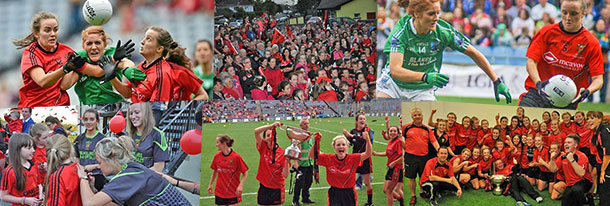2 November 2014 Edition
Playing with the boys

• There is evidence that elite female athletes are closing the gap on males
It is difficult then to see on what basis the fastest women sprinters should be on the same team as the fastest men.
Playing with the boys
THE YEAR 1972 saw the passing into law by the US Congress and Richard Nixon of Title IX to amend the 1964 Civil Rights Act.
The amendment read:
“No person in the United States shall, on the basis of sex, be excluded from participation in, be denied the benefits of, or be subjected to discrimination under any education program or activity receiving federal financial assistance.”
It was part of an attempt to introduce an overall Equal Rights Amendment to strengthen the position of women in the United States. One of its main impacts was to be in the sphere of women’s sport.
In subsequent guidelines, the US Department of Education evaluated whether women athletes were being treated equally on the basis of coaching facilities, quality of equipment, timing of events, and so forth. In other words (to use a pained analogy), to try to ensure that female sportspeople were operating on a level playing field.
The impact of the changes was massive.
Between 1971 and 2001, the numbers of women students taking part in college sports increased from fewer than 300,000 to almost three million, with women athletes now comprising over 40% of all college athletes. The quality of women’s sports has also immeasurably improved (as seen particularly on the track) but also in team sports where standards are much higher.
One of the few relative successes of the socialist states was that women’s track and field was far superior to the United States. The holders of the world records in 100m, 200m and 1500m in 1972, prior to Title IX, were all East German and Soviet runners.
So the moves to favour women athletes in the US may have been as much a reflection of progress already being made within women’s sports internationally as it was a spur to achieve American dominance, and of women’s sprints events in particular.
Women’s team sports worldwide have improved immeasurably as a spectacle with no further proof required than the women’s equivalents of the senior hurling and football championships, with two excellent finals this year (even if Dublin did conspire to commit hara-kiri against the great Cork team in the football final!).
While initial opposition to Title IX came from conservatives in American sports who were concerned that it would ‘undermine’ male college athletics, there has been a thread of criticism in recent years from some women who argue that ‘equal opportunity’ is no longer sufficient and that women’s sports need to be placed on an absolute level par with male sports, to the extent of integrating them at all levels.
That is the argument in a 2008 book, Playing with the Boys: Why Separate is not Equal, by Eileen McDonagh and Laura Pappano. Their thesis is that the current ‘inequality’ between male and female athletes is socially constructed. They claim that “coercive sex segregation … enforces a flawed premise that females are inherently athletically inferior to males”.
The solution to that apparently is that female and male athletes be integrated according to grades at all levels. Would that mean, for example, a 4 x 100m Olympic relay team having the top two runners from each gender? And likewise with team sports like soccer and American Football?
It is an argument I find difficult to accept.
There is evidence that elite female athletes are closing the gap on males. The gap between the women’s and men’s 100m, 200m and 1,500m world records has narrowed but men were breaking the current world 100m record for women almost a century ago.
It is difficult then to see on what basis the fastest women sprinters should be on the same team as the fastest men.
Perhaps the last word ought to be left to Pat Griffin, who has been involved in elite women’s coaching and who describes herself as a “sports feminist”. She fears that integration would overturn the post-Title IX situation and discourage girls and women from taking part in sport, as only the “few exceptional women . . . could compete successfully against men”.
Vive la differénce perhaps.




